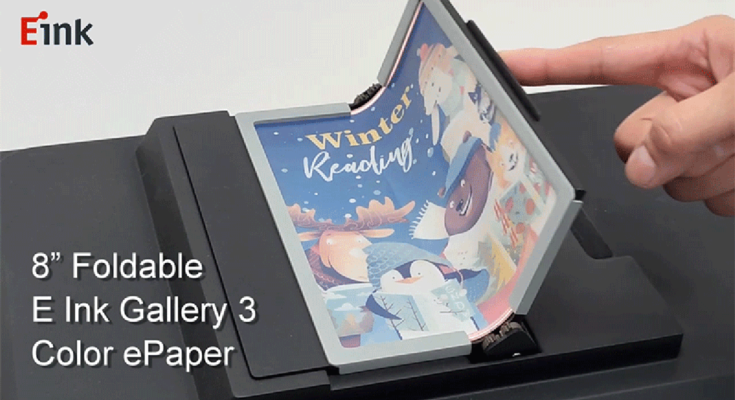We’ve had e-readers and e-note devices featuring color electronic paper screens for a few years now, but E Ink is finally addressing some of the biggest drawbacks of the technology with Kaleido 3, announced earlier this month, and E Ink Gallery 3, announced yesterday. In particular, we’re looking at boosts both to color and resolution.
When we went hands on with the first few devices to feature E Ink’s first generation color electronic paper display technology, we were both blown away by an e-reader that could display color images, and also a bit disappointed at what we saw. Kaleido, as E Ink calls its color e-paper designed for consumer devices, was limited to just 4,096 colors (the screen on your smartphone, laptop, or tablet can display millions of shades) and very much reliant on a bright source of light for those colors not to look dark and muddled. Our experience was seemingly mirrored by companies like Amazon and Kobo, who have yet to adopt color E Ink displays for their popular e-readers.
E Ink has quickly iterated its Kaleido technology over the past couple of years, releasing updated versions that improve color saturation and performance. These include Kaleido 3, announced just a few weeks ago, which has improved responsiveness and refresh rates, allowing the screens to play videos and animations without ugly ghosting, plus a better front light for improved color reproduction when reading in the dark.. That makes Kaleido 3 an exciting option for tablets and other media consumption devices, but it’s still limited in both resolution and just 4,096 colors.

That’s where E Ink Gallery 3 holds more promise. Like the earliest e-readers, it features relatively slow refresh rates, taking up to a second-and-a-half to redraw an entire page in full quality color mode, or just half a second in a color mode with reduced image quality. But the trade-off might just be worth it, as E Ink Gallery 3 can reproduce over 50,000 colors using a “four particle ink system: cyan, magenta, yellow and white.” That’s still no where near as close to the color fidelity of even a cheap LCD panel, but it’s a huge improvement over Kaleido. E Ink Gallery 3 also boosts image resolution to 300 DPI for both color and black and white content, where as Kaleido still limits color imagery to 150 DPI. In the age of Retina Display tech, this is very noticeable.
There’s no specifics as to when we’ll see e-readers or pen-compatible e-note devices featuring E Ink’s new Gallery 3 screen tech (hopefully later this year), but in addition to boasting about its improved specs, the company also demonstrated the flexibility of the displays through a couple of chunky prototypes.
Like the OLED displays that make devices like the Samsung Galaxy Z Fold 3 possible, E Ink’s electronic paper displays are flexible and durable as well, which means we could also eventually see foldable e-readers or e-notes that are just as easy to travel. Of course, there would feature screens nearly twice the size, to accommodate the larger layouts of magazines and newspapers—two formats that don’t reflow well and are hard to read on devices like the Amazon Kindle. Again, there’s no timeline for when we’ll actually see devices like this released, but it’s a future that E Ink is clearly heavily invested in and wants to see happen.



